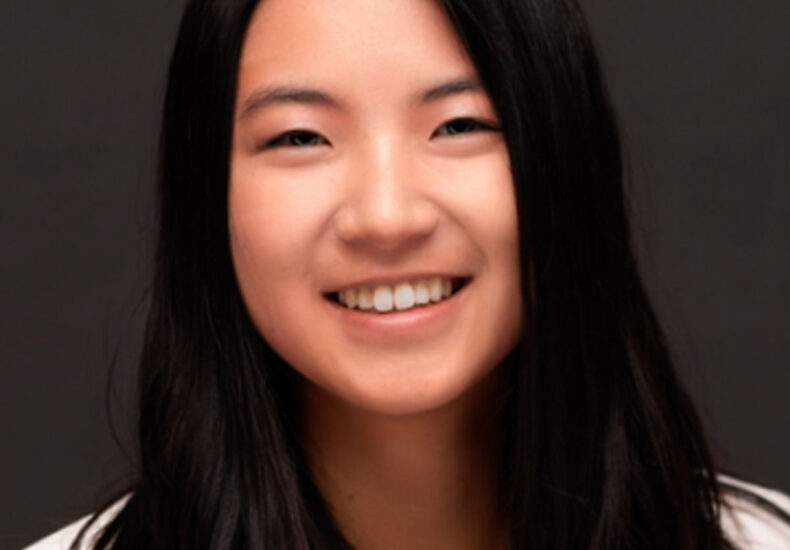
Nowadays Applies AI Lense to “First Principle” Problems of Meeting Planning
Nowadays, an AI-powered meeting planning technology startup, took home both trophies up for grabs last month at the Business Travel Show America Innovation Faceoff: Innovator of the Year as voted by the Innovation Faceoff judging panel, and the People’s Choice as voted by the Business Travel Show America attendees. Nowadays prevailed against 11 other competitors spanning solutions for transient travel, payment and expense management. Co-founder and CEO Anna Sun sat down with BTN VP of content Elizabeth West to discuss the win, the technology and the concept of addressing old problems from the ground up with new solutions. The following is an edited transcript. BTN: Like many meetings technology innovators, your starting point was your own experience and frustrations with organizing meetings. Anna Sun: I studied computer science at Massachusetts Institute of Technology, but I was planning meetings there as well. My sister was planning meetings [as part of her job at] Google. We co-founded the company recognizing the tedious back-and-forth emailing of trying to find and negotiate with venues, collecting quotes and getting bumped afterward. We wanted a process that could get all that information in one place where it was easy to compare data apples to apples. I can remember spending hours copying things to spreadsheets and figuring out the math to compare things. So Nowadays makes all that easier by applying artificial intelligence to the problem. BTN: How does the AI work? Sun: The short version is that a client will go into the platform and put in their event details and the AI will just take it from there. We have a database of 400, 000 venues, which is inclusive of all hotels in the world, and the AI filters down to the best fit based on what the client is looking for-for example, is there enough natural light in the meeting space or are there microwaves in the guest rooms. The AI narrows down the choices and best options, and it can automatically email and call the venues with AI to start the request for proposal process, get the quotes into email and then the AI reads the proposals, extracts key data like nightly rates, attrition policies, cancellation, etc. And then it can compare apples to apples for you in our dashboard. BTN: Am I correct in remembering that the platform will digest attendee home cities and location costs and return a dashboard of cost and convenience options based on all that data? Sun: Right. So we need to know certain details. If it’s a nonprofit, they probably aren’t going for a five-star hotel, but an executive offsite does want that. So taking those factors into account, the user provides an anonymized attendee list of where people are coming from, and then we can estimate how much the flights are going to cost based on historical data, based on layovers; the location itself might have a certain vibe or kind of weather you want, and then when we get down to the cost of the venues, the average cost of meals and coffee breaks, we can ballpark that budget to recommend the best fit. BTN: Four hundred thousand is a lot of venues. How are you capturing that granular level of detail in your database? And how reliable is it? Sun: We directly partner with convention and visitors bureaus and hotel chains and independent venues to get the most up-to-date data. We also partner with Northstar Meetings Group which sources all of their venues through us. Through that partnership, we’re able to make sure things are up to date. But our agents are actively updating data all the time through Google searches. “Hey, what are the top venues in Thailand that can fit 500 people,” etc. The agents also go through hotel websites, read what’s updated and then update our database. Also, when hotels email our system new proposals [for clients], they often will send new promotions and new renovations that have happened. Our AI automatically updates that in our database. BTN: Just to be clear, when you say “agent,” we should always understand that as “AI agent” or “bot”? Sun: Correct. BTN: SkyLink CEO Atyab Bhatti, one of the Innovation Faceoff judges, said about Nowadays that you were solving old problems in new ways and looking at it from a “first principles” angle, which is unlike legacy tech that often overlays AI onto its existing solutions. Tell me more about building natively with AI. Sun: We’ve seen a lot of legacy platforms integrating AI. Often that takes the form of, “OK, we have some data our clients want to understand better. Let’s build an AI chatbot on top of that, so they can summarize data and extract the most important details.” That’s almost like a nice-to-have, because the hardest part [with meetings] is doing the manual logistical work. It’s hard to build AI agentic workflows if you already have that manual workflow in place. You’re ripping out all the software you’ve already built. When we think about a problem now, we think about how does this scale in 10 years so it’s completely automatic. Our vision is that there will be hotel AI agents that are communicating with our AI agents for clients, and it will be completely automatic. We always try to build toward that. BTN: Many times in a negotiation there’s an organic development in a conversation between two people. If a certain thing is available, it could re-stack the deck of priorities for either side. Can agentic AI account for that kind of non-linear decision-making? Sun: We are building user profiles to learn the typical decision factors. Do they care about the quality of the food the most or the how nice the meeting spaces are? I think it really helps. Plus, we have so much access to data from all the other contracts that our clients have negotiated and what the standard list of concessions are, so less experienced meeting planners who [occasionally] organize events might not ask those types of questions. The technology does a lot of double-checks on priorities but also saying to the organizer, “Hey, make sure you’re not just signing the contract as is, always try to negotiate and get the best rate.” Of course, if you’re more experienced, you have that list and those checks can be automated through Nowadays. BTN: AI runs on massive amounts of data. You are collecting user data from their contracting and other activities in the platform to inform your development. Some companies might not love that. Sun: We definitely anonymize the data. Some companies want us to learn from their experiences so the next time they plan that VIP kickoff, we know exactly what they care about. It’s almost like they have their own AI model trained for them and accessible only to them. In terms of other clients, we just make sure that once we anonymize that data, it’s mostly to collect hotel proposals and help us build up a database of how we can predict what hotels are going to give us instead of having to request it every time. We do that so we can give more real-time feedback to our users. BTN: At the very end of your Faceoff presentation, you offered-and maybe challenged-attendees to bring you problems to solve. How do you stay agile to customize like that? Sun: Our whole company is based on client feedback, and we started the company by first doing 200 user interviews before coding anything. We want to understand the client problem and how they envision a solution for themselves. If we talk to 50 people and they’ve all asked for this certain customization, of course, we will build it. There are smaller customizations that might be geared more toward one company versus the broader [universe], but because we are very fast at building-we’re a team of MIT and Ivy League engineers-it sometimes just takes us a couple of hours to push out a change. We might as well make sure a potential client can have everything they need to get the green light. BTN: I assume you are using AI code to help you develop? Sun: Definitely. I don’t know how deep you want me to go into it. It’s pretty crazy. You can imagine I have 34 monitors up and each one is coding while I’m doing something else. BTN: Who is your target client? Is it the small to midmarket, or are you working toward larger enterprises? Sun: We were in Y Combinator and we’re in Silicon Valley, and [my sister] Amy and I both come from a tech background. Our first 100 users were tech companies ranging from 10 to 500 people planning offsites and meetings. Their feedback really helped us iterate quickly because they understand tech and they were willing to adopt it early. Now, we’ve built the platform to a place where more corporate meeting planners [can] understand it and we, also, understand the problem better so we can sell better. On the other hand, we’re a team of engineers versus a team of business finance people trying to solve a problem to make money. That’s a big difference we’ve seen at conferences. I’m always the youngest in the room and usually the only one with a computer science background. BTN: But you want to make money, too-what’s Nowadays’ commercial model? Sun: We charge a percentage sourcing fee to our clients, and we also make commission from the hotel side. For enterprise clients or those that are doing 10 or more events a year, we’ll go to an annual fee that makes more sense. BTN: Are you always going direct to corporate? Are agencies interested in your tool right now?.
https://www.businesstravelnews.com/Interviews/Nowadays-Applies-AI-Lense-to-First-Principle-Problems-of-Meeting-Planning
You may also like
You may be interested
Globe bets on prepaid fiber, sets expansion
No content was provided to convert. Please provide the text...
Bragging rights up as Samal makes 5150 debut
A stellar Open division field will be shooting for the...
DigiPlus launches P1-M surety bond program
MANILA, Philippines — DigiPlus Interactive Corp. has partnered with Philippine...
 The New York Times
The New York Times
- Trump Uses National Guard Shooting to Cast Suspicion on Refugees 2025 年 11 月 28 日 Shawn McCreesh
- For Shooting Suspect, a Long Path of Conflict From Afghanistan to America 2025 年 11 月 28 日 Campbell Robertson, Hamed Aleaziz and Jack Healy
- Carney Lifts Climate Laws for New Alberta Pipeline 2025 年 11 月 28 日 Ian Austen
- Hong Kong’s Worst Fire in Decades Fuels Scrutiny of Safety Lapses 2025 年 11 月 28 日 Alexandra Stevenson, Joy Dong, Tiffany May and Keith Bradsher
- The Uniquely American Heartbreak of Yet Another Tragedy 2025 年 11 月 28 日 The Editorial Board
- Trump’s Greedy Thanksgiving 2025 年 11 月 28 日 Molly Jong-Fast
- SNAP Helping Families Put Thanksgiving Dinner on the Table 2025 年 11 月 28 日 Jenna Russell
- Robert A.M. Stern, Architect Who Reinvented Prewar Splendor, Dies at 86 2025 年 11 月 27 日 Robert D. McFadden
- ‘No Alarm Went Off’: Hong Kong Fire Survivor Recounts Harrowing Escape 2025 年 11 月 27 日 Joy Dong
- Louvre Raising Ticket Prices for Non-European Visitors 2025 年 11 月 27 日 Ségolène Le Stradic and Alex Marshall


Leave a Reply